Last Updated on March 11, 2024 by Michelle
Is soil testing important for your vegetable garden? I never thought so. Until I almost killed my garden.
Truth is, without a soil test, I would have killed my garden & never understood why.
Until now, I never thought a soil test was important.
I also never thought you could have too much phosphorous, since it is, after all, one of the 3 necessary nutrients for your garden.
And I never thought a garden could have too much manure or compost added in, because both are so good for a garden… or so I thought.
Boy was I wrong. On all accounts. Read on to find out how I almost killed my garden by doing all the “right” things and NOT doing the one thing I should have.
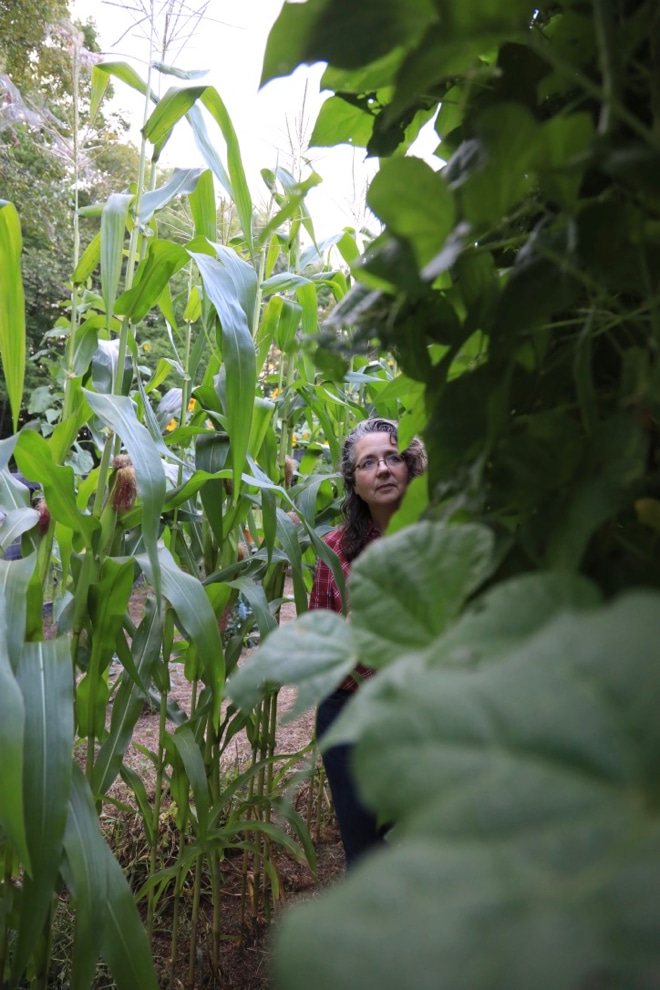
Is Soil Testing Important for your Garden?
For so many reasons, soil testing every so often is very important for you garden. Keep reading for the full scoop.
What nutrients does a soil test look for?
To be it’s best, garden soil needs these major, and minor, components:
- Nitrogen
- Phosphorus
- Potassium
- manganese
- zinc
- copper
- iron
- baron
- sulfur
- magnesium
- sodium
- molybdenum
- calcium
- chlorine
- silicon
- oxygen
- carbon
- hydrogen
The first 3 are the big 3 macronutrients that you always hear about. They’re the big 3 that make up fertilizers, in various degrees. The fertilizer numbers tell you the amount of these 3 macronutrients, so a fertilizer labeled with “23-3-8” will contain 23% Nitrogen, 3% Phosphorus, and 8% Potassium.
You can also purchase micronutrient fertilizers, but more on that in a minute.
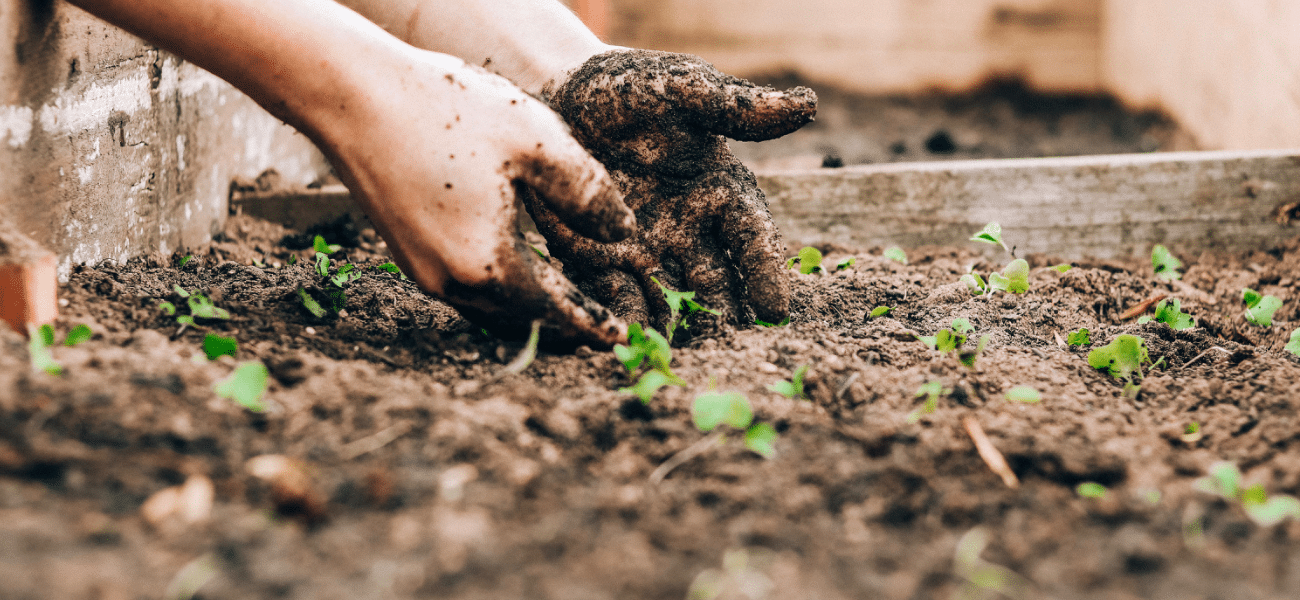
Why do these nutrients matter in your garden soil?
The healthier your garden soil is, with the ideal balance of all the macro and micronutrients, the healthier your soil bacteria will be.
Why does bacteria matter in your soil? It’s kind of the same idea as the importance of healthy bacteria in your gut, actually. (Y’all know I take that topic very seriously, and solve it deliciously, by making my own kombucha.)
When the good bacteria is healthy, they form new soil constantly and your soil is continually fertile. Those good little guys also create growth regulators in your soil, which the plants need in order to take in nutrients. (source)
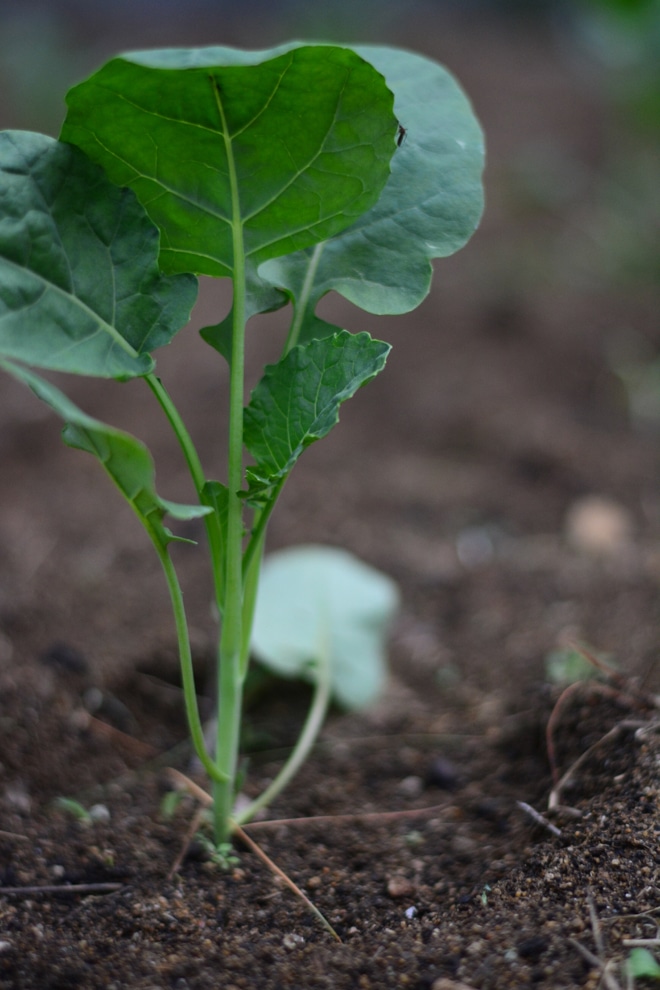
Can you really have too much of a good nutrient in your garden soil?
Okay, so if these nutrients are all vital in good bacteria development and the overall soil health, surely you can’t have too many nutrients, right?
That’s honestly what I always thought. I knew that compost and manure were great at building up soil nutrients. And I knew that 10-10-10 fertilizer packed a nice dose of all 3 important nutrients into the soil.
So I always made sure to add the major nutrients at every opportunity. I would do all of these things:
- I always dug deep below each new seedling or seed before planting it to bury some 10-10-10 to feed the roots as each plant grew.
- Then I would scatter some 10-10-10 around the top of the ground near all newly planted things in my garden soil.
- In the same areas where I added fertilizer I sprinkled rich, black compost as well. Compost I tended to myself all year long and knew it was good stuff.
- Every fall I would allow the chickens and ducks free-ranging access to the garden area, after I had harvest all our food. They could turn over the soil, dig out roots, and leave their poo all over for added wonderful manure.
While there’s nothing wrong with any of these techniques, without first testing your soil, to analyze your current nutrients, every one of these things could do more harm than good.
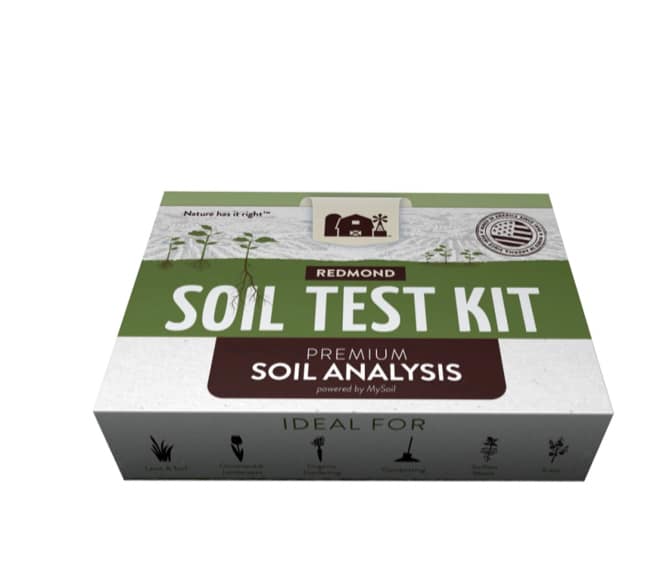
Why I did a soil test…
Last year’s garden baffled me a little.
We had a lot of rain. A LOT. And my plants were all looking bad. Their leaves all had signs of fungus, so I removed any bad looking leaves, made sure no plants had leaves toughing the ground, removed all bad leaves far from the garden (and made sure to never add them to my compost pile… go here for more on how to make compost), and treated the plants with a natural fungicide.
But nothing helped.
I was very thankful I had early crops of everything because the garden quickly dried up and I had little to harvest by end of August. More leaves continually kept looking yellow, even after a month of doing all the right things to combat fungus.
So I ordered a soil kit.
Because I’ve had great respect for Redmonds for years (I’ve used no other salt since I met them) I knew I wanted to try their new soil test kits. I talked with their company and knew they were not only affordable but would provide all the details I needed to analyze my garden soil (in layman’s terms), and correct any deficiencies.
It was super easy to collect my dirt sample and mail it back in the postage paid envelope that was included in the kit. The wait, on the other hand, was pretty hard. Thankfully, in exactly 5 days from when placed the kit in my mail box (even including 3 days over a holiday weekend!) I had an email with a link to my results.
I knew a soil test like this one that I requested doesn’t test for soil disease, fungus, or pest problems. But I also knew that healthy soil is always much less susceptible to disease and pests than unhealthy soil, so it seemed logical to start by seeing if indeed my soil was healthy.
It turned out it was the perfect place for me to start.
If you’re interested in a soil test kit of your own, use code SOULYRESTED and save 15% off your entire order (feel free to order multiple kits and take 15% off the full amount).
What I learned from a soil test of my garden soil…
I was surprised at how shocked I was with the results. I truly thought I surely had fantastic soil. It looked wonderful. I did all the “right” things. And until that dreaded excessive rain and fungus I’d never had a problem.
I was also surprised that I felt like a dejected middle schooler with an embarrassing report card as I opened that email of test results a few days after sending in my soil.
I had an insanely high amount of Phosphorus. And an almost non-existent amount of both Nitrogen and Potassium.
While a surplus of any nutrient may not seem like an issue, high phosphorus levels can actually do some excessive damage to garden plants.

What does excess phosphorus do to garden soil?
Too much phosphorus in the soil can destroy otherwise healthy plants.
I was shocked the more research I did… It turns out that plants growing in excessive amounts of phosphorus develop yellow leaves. Guys, I never had a fungus! I had excessive phosphorus, but to combat what I thought was fungus I kept adding all the “good nutrients” to the soil… I added more compost than usual. More 10-10-10 than usual. And I let the chickens and ducks spend even more long weeks in the garden last fall and even in winter…
All of these things added MORE phosphorus to the soil and exasperated my problem.
Then this spring my poor new seedlings were going into bad soil and I made it worse by planting them with excess compost and fertilizer.
I should have done the soil test last fall, instead of after planting the garden this spring.
You see, when there is high amounts of phosphorus, it impacts plant roots to the point that they are not able to take in zinc and iron from the soil, even if there is plenty of these micronutrients in the garden soil.
My results showed a low amount of iron, but crazy high amounts of zinc, in fact as high as the phosphorus.
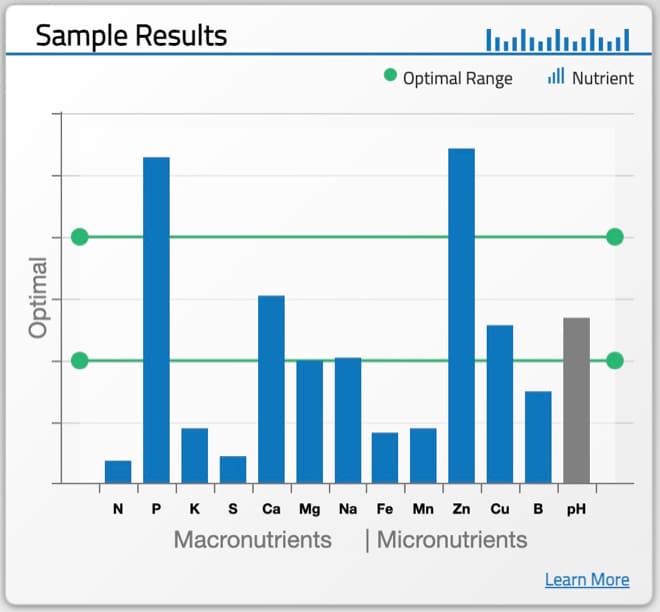
But my plants were suffering from a lack of zinc because they weren’t able to get the zinc through their roots.
When the plant isn’t getting these micronutrients, the leaves will turn yellow and wither.
At this point I was really thankful that the soil test I chose to use made the rest super easy for me.
So what do you do if a soil test reveals excess phosphorus?
Unlike other soil tests I’ve heard of, my results covered both ends of the spectrum. I liked that I had a quick glance, with a simple bar chart, but also the nitty gritty details:
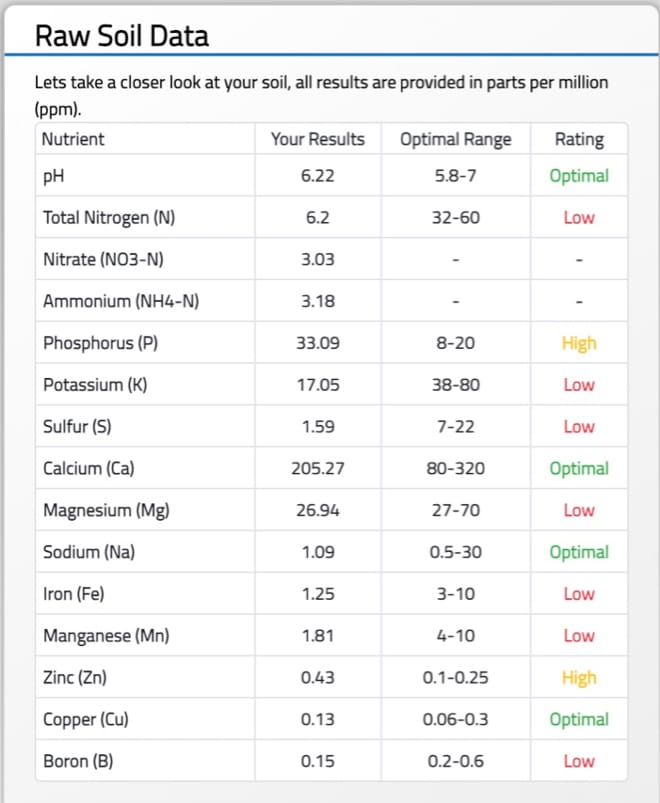
But what I really loved was that they didn’t do. They didn’t leave me hanging, telling me a bunch of information but no solution. Funny enough before I even realized this I was googling what to do about high phosphorus levels in garden soil.
I was reading things like,”While commercial growers may be able to treat zinc and iron deficient plants through foliar feeding, this option is often not realistic for home growers.” What?
I read lots about how phosphorus harms the roots and how specifically zine and iron will not be able to enter the roots and the plant will yellow and wither from deficiencies. I read about what causes the high phosphorus levels, and I read about long-term ways to correct the problem. But I was left defeatedly feeling there wasn’t much I could do to help my poor just-planted garden.
Then (silly me) I finally read the rest of my test result information. (Don’t be me. Trust me, read it all before you panic.)
With handy links, my test results told me two products that I could apply immediately that may save my plants.
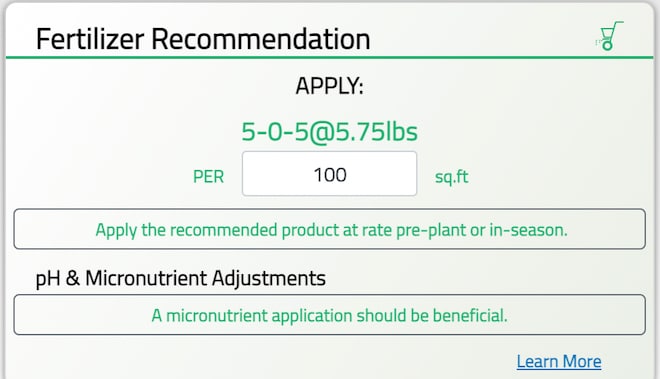
Other Problems of Excess Phosphorous in Soil?
What I’m doing immediately
- No more compost goes in the garden. At all.
- No more 10-10-10 (Avoiding the addition of phosphorus for several growing seasons will help reduce the amount present in the soil.)
- Ordered foliar spray of iron and zinc
- Ordered 5-0-5 fertilizer
What I’m doing as soon as I can
- Spreading, working into the soil, and watering well 5-0-5 fertilizer over every inch of the garden (avoiding getting it directly on any of the plants)
- Mulching with straw and/or grass clippings to encourage the fertilizer to stay in place, and not run off with watering or rainfall
- Treating all the plants’ leaves with the foliar spray weekly (or at least once a month) *
- Adding a lot of coffee grounds to my compost pile, which will add a lot of nitrogen to my garden soil next year. (To increase our usual amount, I’m going to try to find a local coffee shop that will save their grids for me for a few days, hoping they’ll want to help a local gardener amend her soil.)
- Researching a good cover crop that will amend this soil problem. **
What I won’t be doing in the upcoming years
- Adding compost to the garden, unless I’ve built up sufficient nitrogen and less phosphorus (a soil test will tell me next year)
- Adding manure to the garden
- Allowing the chickens and ducks to forage in the garden in the fall
- Using 10-10-10 fertilizer again, at least until I get back positive soil test results in future years
- Retesting my soil at least once a year, maybe twice (spring and fall). Since code SOULYRESTED saves 15% off my entire order, for a limited time, I may stock up on these soil test kits!
How to Apply Foliar Zinc & Iron
More About Cover Crops
To fix high phosphorous levels, try planting a winter cover crop of legumes, such as clover or winter peas. (source) In the spring, you can simply till under the plants into your garden beds. As these plants decompose, they will raise the total nitrogen in the soil and will make nitrogen available for plants that are unable to get nitrogen from the air. Your garden will grow greener and more lush thanks to plants that fix nitrogen and their beneficial symbiotic relationship with bacteria.
Nitrogen fixing plants don’t pull nitrogen from the air on their own. They actually need help from a common bacteria called Rhizobium. The bacteria infects legume plants such as peas and beans and uses the plant to help it draw nitrogen from the air. The bacteria converts this nitrogen gas and stores it in the roots of the plant. When the plant stores the nitrogen in the roots, it produces a lump on the root called a nitrogen nodule (You can bet I’ll be looking for nitrogen nodules next fall!) This is harmless to the plant but very beneficial to your garden.
A Few of my Favorite Gardening Things
Talk to me!
If you have any questions, leave a comment below. And please tag me on ig to show me your amazing gardens @souly.rested.
More Helpful Gardening Articles:
How to Grow Seedlings for Profit
8 Gardening Tricks Inspired by the Pros
All the Best Gardening Tools and Resources
Let us acknowledge the LORD; let us press on to acknowledge Him. As surely as the sun rises, He will appear; He will come to us like the winter rains, like the spring rains that water the earth. Hosea 6:3
Pin this for later!
Click on the image below to pin this post.
Find out why SoulyRested was considered to be one of the Top 20 Must-Read Homesteading Blogs of 2018 and then one of the Top Homesteading Blogs of 2021 as well.
Glance at my Resource Page if you’d like to get a glimpse of all the supplies I use and recommend for everything from gardening, to homeschooling, to chicken care, to nature journaling, to maple syrup making.
I’d love to connect!
To find me in some other neck of the woods, just click any (or every!) icon below:

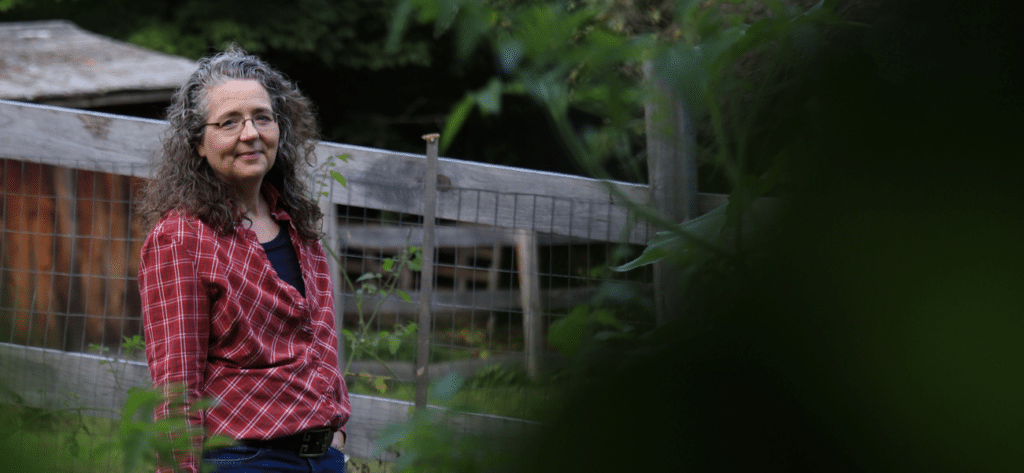
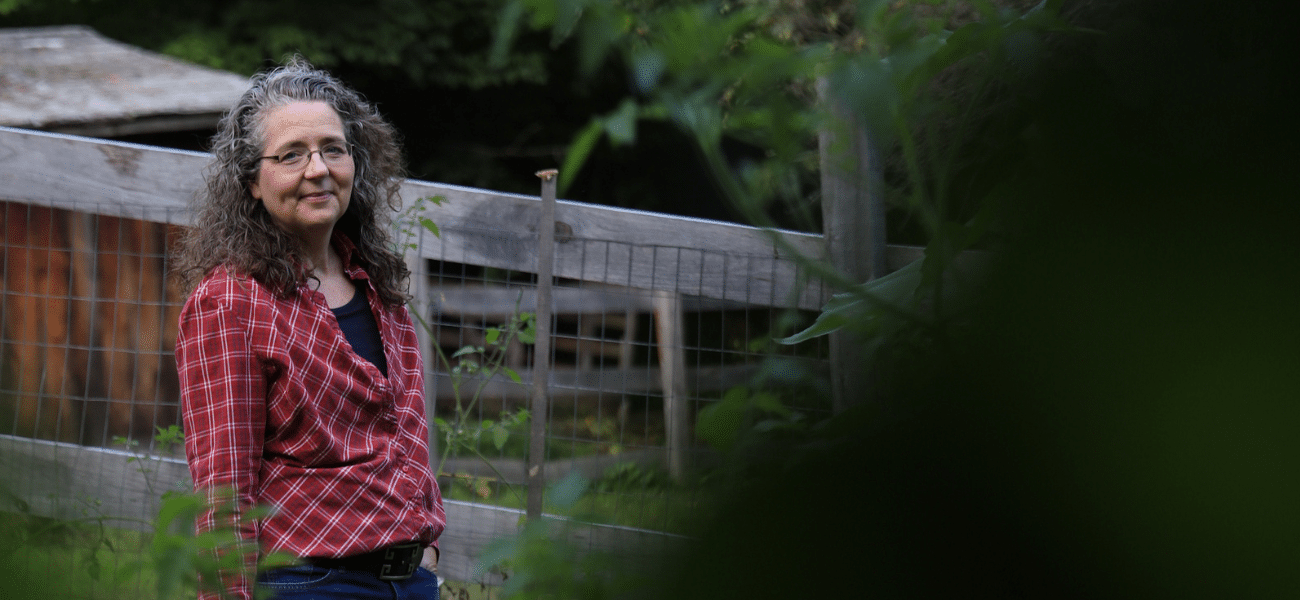
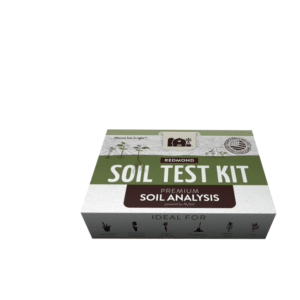
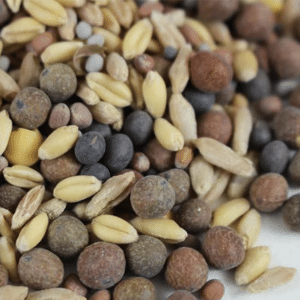
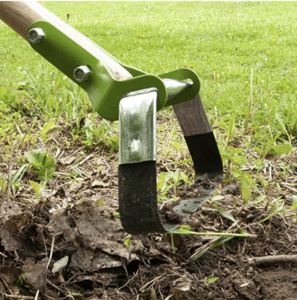
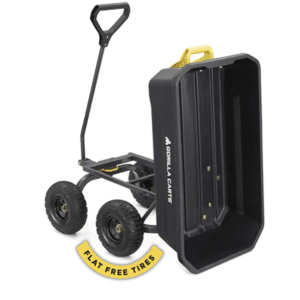
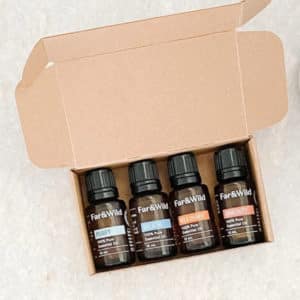
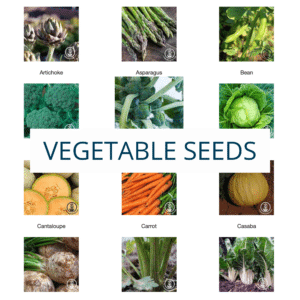
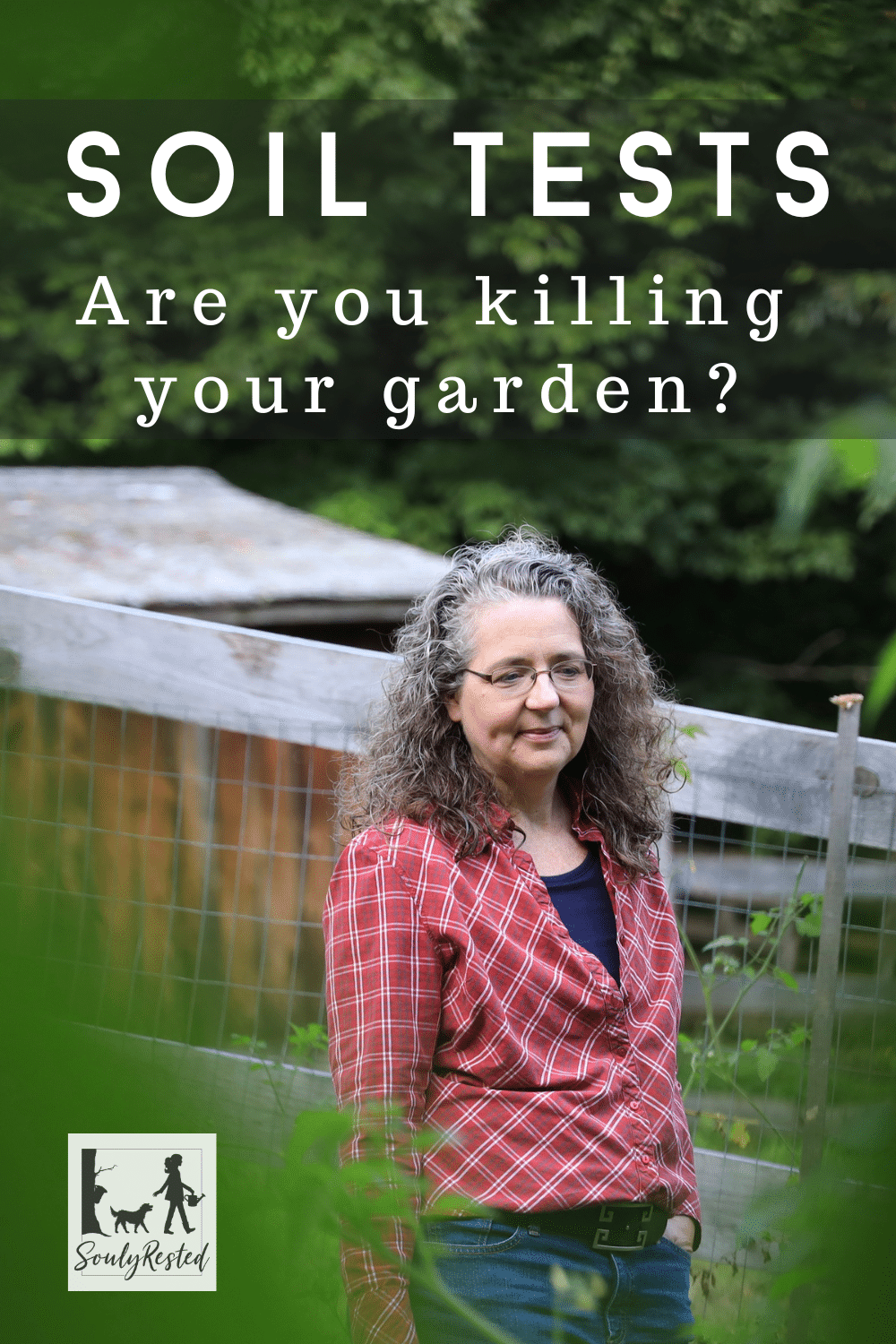





THANK YOU so much for this post!! I have been wondering the last few years why I had developed such a “brown” thumb and have all but given up planting anything! And to make matters worse the WEEDS (violets and poke salad) have just ruined my interest!! I just hire someone to come over and weedeat everything and call it good. It is all so sad to me!
I’m sending off for the soil testing kit today and so I can see just what is what….and hopefully work to fix it!
I appreciate all this info so much!!
oh I’m soooo sad for you… honestly I probably would be in exactly your position at this point of the season if I hadn’t thought to do this soil test in the spring. I only wish I had done it last fall! (I can’t believe ALL the 10-10-10 and compost and manure i loaded in this spring thinking I was HELPING my problems!! I imagine I’ll be many years in recovery mode, but hopefully my plants will survive well enough (now that they’re getting the added nutrients their roots couldn’t take in any longer, via the foliar spray) that I get a good harvest this year. I hope you can amend your soil in time for next spring!!
To tell the truth, I am so glad that I came across your article because it made me look at many things from a different angle and reconsider my position on it. Before this moment, I hadn’t thought about the importance of soil testing for the garden in a deep way, but now I understand that this thing makes a great difference for maintaining your garden in a good condition. It is incredible how many advantages soil testing has and to what extent it can benefit your garden, but it performs a really significant function. I think that it is the best way to learn more about the needs of your garden. In reality, it is so cool that you mentioned the impact of too much phosphorus in the soil because gardeners are really often not serious enough about this problem, but high levels of phosphorus can cause zinc and iron deficiency in the soil, as they quickly become inaccessible to plants.
Yes! And unless I spray the zinc on the plant leaves they will have none at all! It’s really crazy. I too am “sold” that soil testing needs to be part of my garden routine.
Soil testing is an important part of ensuring your garden is healthy and productive. By testing your soil, you can determine what nutrients it lacks and make adjustments to ensure your plants are getting what they need.
absolutely. I had no idea how vital it was until just this year.
This insightful post underscores the importance of soil testing in gardening. Your practical approach and emphasis on understanding soil health make it a must-read. Excited to implement your tips for a more thriving garden!
so glad it was helpful for you! soil health is so important!